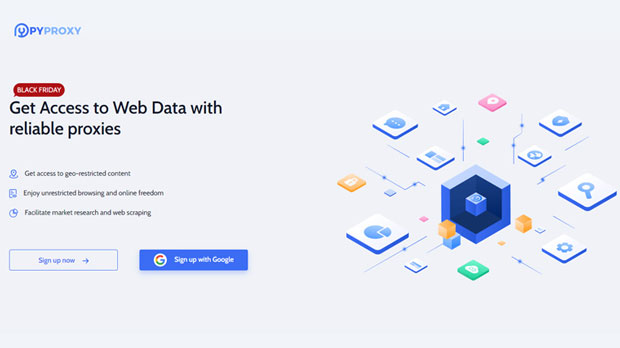In the modern digital landscape, privacy and security are becoming increasingly important. One of the most sought-after tools for ensuring anonymity while browsing or managing online tasks is the socks5 proxy. While several proxy service providers offer various pricing plans, a key question arises: Does PYPROXY support hourly rental of sock s5 proxies? This article will explore whether this type of proxy rental is possible through PyProxy, its benefits, and why users might prefer hourly rental for their specific needs. Understanding SOCKS5 ProxiesSOCKS5 proxies are advanced networking tools that provide users with enhanced anonymity and a more secure browsing experience. SOCKS5 stands for "Socket Secure version 5," a protocol that allows for the routing of internet traffic through a proxy server. Unlike traditional proxies, SOCKS5 proxies do not interfere with the data packets, meaning they support any type of internet traffic, including HTTP, FTP, and even peer-to-peer protocols.These proxies are highly beneficial for various activities, including secure browsing, bypassing geographical restrictions, and maintaining privacy in sensitive online transactions. However, the flexibility of their use can vary depending on the provider and rental options available.The Need for Hourly RentalsFor many individuals and businesses, the need to rent a SOCKS5 proxy on a long-term basis is not always ideal. Some may require temporary access to a proxy for specific tasks such as web scraping, data mining, or testing purposes. Hourly rental offers the convenience of paying only for the time needed, making it a more cost-effective option compared to purchasing a long-term subscription. Hourly rental is also beneficial for users who only need a proxy for specific periods, such as during peak working hours, for research projects, or when working on a particular task. This type of flexible, short-term solution makes SOCKS5 proxies more accessible to a wider range of users, from individuals to companies that need proxies only for short bursts of time.Does PyProxy Offer Hourly Rentals for SOCKS5 Proxies?At present, PyProxy offers various rental plans, but it is important to clarify whether hourly rentals are part of their offerings. Typically, proxy services operate on a subscription basis, offering monthly, weekly, or sometimes annual rental options. However, many providers, including PyProxy, may provide a customizable package where users can select specific timeframes for rental, which could potentially include hourly rental.While the official pricing model may not explicitly highlight "hourly" rental, it is worth noting that some providers may allow users to configure their rental terms to fit their needs, including by adjusting the duration based on time-sensitive tasks. It is recommended that users inquire directly with the service provider or explore the available options to ensure that they can access the flexibility they require.Why Choose Hourly Rentals?Cost EfficiencyThe main advantage of renting a SOCKS5 proxy on an hourly basis is the potential for cost savings. By avoiding long-term commitments, users can allocate funds only for the exact time they need the proxy. This is especially useful for one-time projects, short-term business endeavors, or when proxies are needed for occasional tasks. Additionally, hourly rentals eliminate the need for paying for unused time, which can significantly reduce overall costs.FlexibilityAnother key reason to opt for hourly rentals is flexibility. Many businesses and individuals face fluctuating workloads, and there may be times when a proxy is required for just a few hours. Whether it is for bypassing regional restrictions, conducting research, or securing online activities, hourly rentals allow users to manage their time and resources more effectively. This flexibility provides a practical solution for users who do not want to be locked into a subscription plan that may not align with their specific needs.Short-Term ProjectsFor those working on short-term projects, renting a SOCKS5 proxy by the hour ensures they only pay for what they need. This is particularly useful for developers, marketers, and researchers who may require a proxy for tasks like data scraping, testing applications, or geo-targeted marketing campaigns. Having the ability to rent a proxy for a limited period allows them to stay within budget while maintaining the necessary resources to complete their tasks effectively.Privacy and Security ControlHourly rental also offers more control over privacy and security. Users can rent proxies only when they are performing tasks that require a high level of confidentiality, such as handling sensitive data or managing accounts that must remain anonymous. This selective approach to using proxies can reduce the risk of exposure, as users can be sure that their proxy use is limited to specific timeframes.Alternatives to Hourly RentalsIf PyProxy or similar services do not offer an explicit hourly rental option, there are alternative approaches that users can consider. Some providers may allow users to rent proxies on a daily or weekly basis, which can offer similar flexibility. Additionally, some proxy providers may offer pay-as-you-go models where users can adjust the rental duration based on their specific requirements.Another option is the use of shared proxies, which are typically less expensive and can be used for short bursts of time. While shared proxies may not offer the same level of privacy as dedicated ones, they can still serve basic needs for temporary usage.ConclusionIn conclusion, while PyProxy may not explicitly offer hourly rental of SOCKS5 proxies, there are still ways to achieve flexible rental terms. Hourly rental is a highly beneficial option for users who require short-term proxy use for specific tasks. By offering flexibility, cost savings, and enhanced control over security, hourly rentals provide a valuable solution for users with varying needs. For those looking to use SOCKS5 proxies for a short duration, contacting the provider directly or exploring customizable rental options could help secure the right plan.With more services adjusting to user demands for flexibility and cost-effectiveness, the availability of hourly rentals will likely increase, allowing users to enjoy greater control over their proxy needs. Whether for business or personal use, SOCKS5 proxies rented on an hourly basis provide a flexible and efficient solution for a wide array of tasks.
Aug 18, 2025


































































